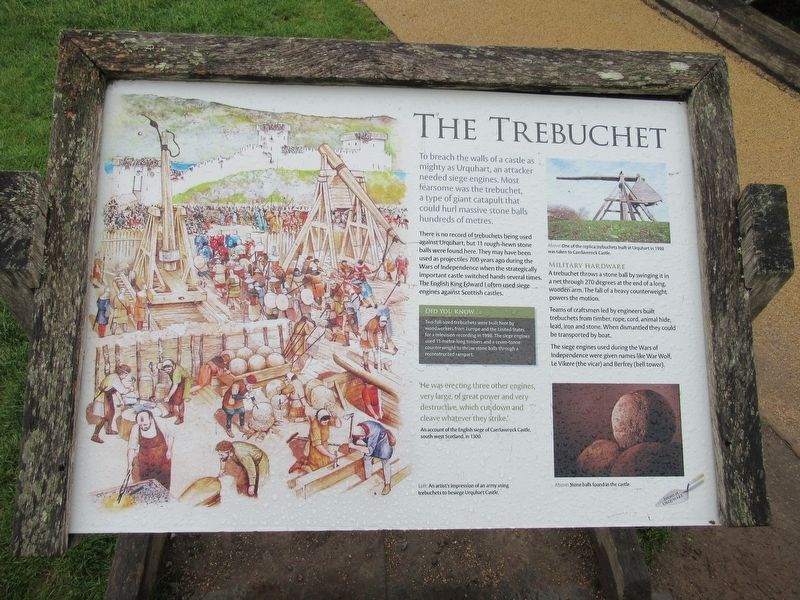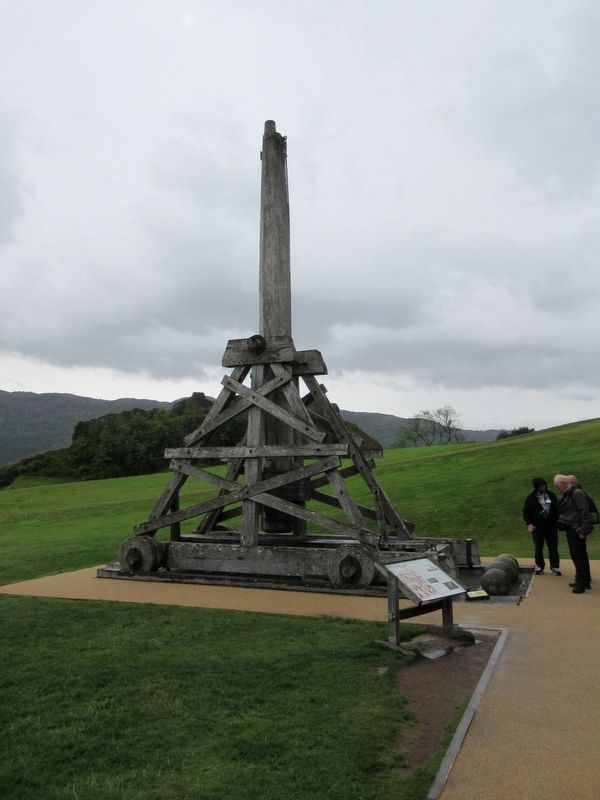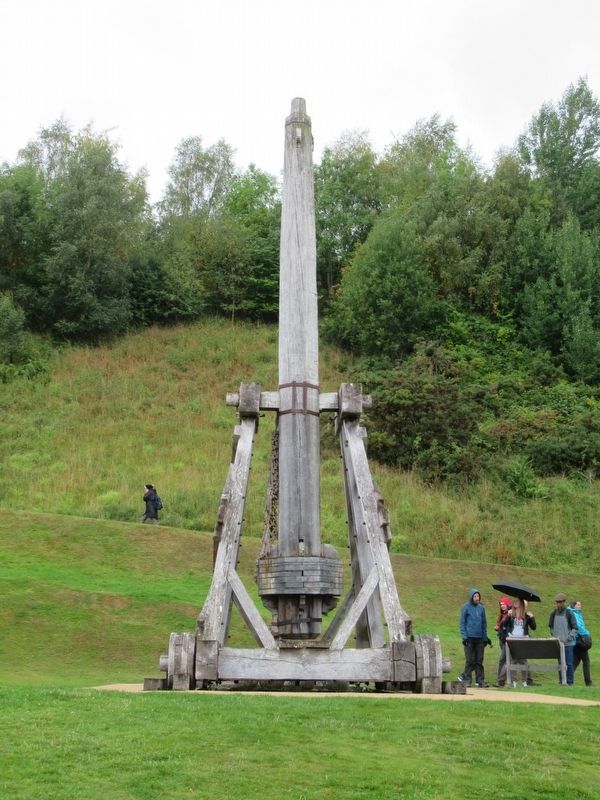Inverness in Highland, Scotland, United Kingdom — Northwestern Europe (the British Isles)
The Trebuchet
There is no record of trebuchets being used against Urquhart, but 11 rough-hewn stone balls were found here. They may have been used as projectiles 700 years ago during the Wars of Independence when the strategically important castle switched hands several times. The English King Edward I often used siege engines against Scottish castles.
Did You Know …
Two full-sized trebuchets were built here by woodworkers from Europe and the United States for a television recording in 1998. The siege engines used 11-metre-long timbers and a seven-tonne counterweight to throw stone balls through a reconstructed rampart.
‘He was erecting three other engines, very large, of great power and very destructive, which cut down and cleave whatever they strike.’
An account of the English siege of Caerlaverock Castle, south-west Scotland, in 1300.
Military Hardware
A trebuchet throws a stone ball by swinging it in a net through 270 degrees at the end of a long, wooden arm. The fall of a heavy counterweight powers the motion.
Teams of craftsmen led by engineers built trebuchets from timber, rope, cord, animal hide, lead, iron and stone. When dismantled they could be transported by boat.
The siege engines used during the Wars of Independence were given names like War Wolf, Le Vikere (the vicar) and Berfrey (bell tower).
( photo caption )
- Left: An artist's impression of an army using trebuchets to besiege Urquhart Castle.
- Above: One of the replica trebuchets built at Urquhart in 1998 was taken to Caerlaverock Castle.
- Above: Stone balls found in the castle.
Topics. This historical marker is listed in this topic list: Forts and Castles. A significant historical year for this entry is 1998.
Location. 57° 19.484′ N, 4° 26.625′ W. Marker is in Inverness, Scotland, in Highland. Marker can be reached from Scotland Route A82, 3.7 kilometers south of River Enrick (Route A831), on the left when traveling south. Located at Urquhart Castle. Touch for map. Marker is in this post office area: Inverness, Scotland IV63 6XL, United Kingdom. Touch for directions.
Other nearby markers. At least 8 other markers are within walking distance of this marker. A Highland Icon (within shouting distance of this marker); Caisteal Ainmeal Urchadain (about 90 meters away, measured in a direct line); Destroying the Gatehouse (about 90 meters away); The Gatehouse (about 120 meters away); Urquhart the Defiant (about 120 meters away); The Stables (about 120 meters away); The New Kitchen (about 120 meters away); The Private Chamber (about 120 meters away). Touch for a list and map of all markers in Inverness.
Also see . . .
1. Urquhart Castle. (Submitted on December 9, 2018, by Michael Herrick of Southbury, Connecticut.)
2. Urquhart Castle on Wikipedia. (Submitted on December 9, 2018, by Michael Herrick of Southbury, Connecticut.)
Credits. This page was last revised on January 27, 2022. It was originally submitted on December 9, 2018, by Michael Herrick of Southbury, Connecticut. This page has been viewed 385 times since then and 65 times this year. Photos: 1, 2, 3. submitted on December 9, 2018, by Michael Herrick of Southbury, Connecticut.


